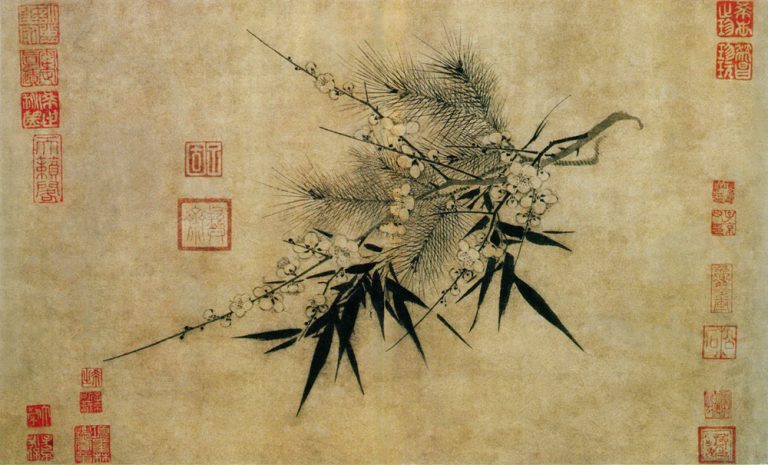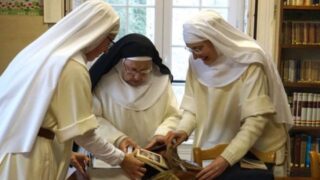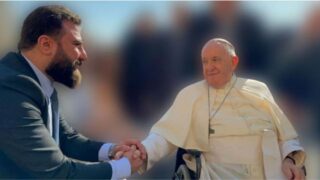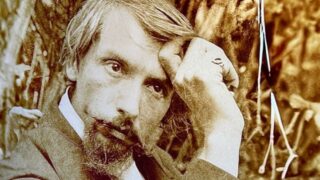Contemporary art often is far away from Christianity. Rather than blaming the artists, Benedict called Christians to acknowledge that genuine art may always offer a spiritual experience.
by Massimo Introvigne
Article 3 of 3. Read article 1 and article 2.


In his pilgrimage to Santiago de Compostela and Barcelona on 6 and 7 November 2010, talking with journalists, Benedict XVI proposed a further foundation of his usual discourse on art. It is the equilibrium between faith and reason, a main theme of his thought, he said, that requires the equilibrium between faith and beauty and “between faith and art.”
“You know, he told reporters, that I place great emphasis on the relationship between faith and reason, that faith, and Christian faith, has its identity only in openness to reason and that reason becomes itself if it transcends itself towards faith. But the relationship between faith and art is equally important because truth, the aim or goal of reason, is expressed in beauty and in beauty becomes itself, is proven to be truth. Therefore, wherever there is truth beauty must be born, wherever human beings are fulfilled in a correct and good way, they express themselves in beauty. The relationship between truth and beauty is inseparable and therefore we need beauty.”
Even in the early times of Roman persecution, expressing the faith through the arts became “constitutive for the Church, Benedict said, and remains constitutive forever. The Church was consequently a mother to art for centuries and centuries: the great treasure of Western art—music, architecture and painting—was born from faith within the Church. Today there is a certain ‘dissidence’ but this is bad for both art and faith. An art that lost the root of transcendence would not be oriented to God: it would be a halved art, it would lose its living root; and a faith that had art only in the past would no longer be faith in the present.” Note that Benedict did not blame the modern artists only for this lost contact with the Church. He also asked Christians to reflect on their own shortcomings and mistakes, and humbly “do their upmost” to start a new dialogue with artists.
In the general audience of August 31, 2011, the Pope explained that the awe we experience in front of art teaches us how to pray. “It may have happened on some occasion, he said, that you paused before a sculpture, a picture, a few verses of a poem or a piece of music that you found deeply moving, that gave you a sense of joy, a clear perception, that is, that what you beheld was not only matter, a piece of marble or bronze, a painted canvas, a collection of letters or an accumulation of sounds, but something greater, something that ‘speaks,’ that can touch the heart, communicate a message, uplift the mind.” And it is so because artistic beauty “resembles a door open on to the infinite, on to a beauty and a truth that go beyond the daily routine. And a work of art can open the eyes of the mind and of the heart, impelling us upward.”


This is true of all genuine art, including the most secular, Benedict said. However, “some artistic expressions are real highways to God, the supreme Beauty; indeed, they help us to grow in our relationship with him, in prayer. These are works that were born from faith and express faith. We can see an example of this when we visit a Gothic cathedral: we are enraptured by the vertical lines that soar skywards and uplift our gaze and our spirit, while at the same time we feel small yet long for fullness…. Or when we enter a Romanesque church we are spontaneously prompted to meditate and to pray. We perceive that these splendid buildings contain, as it were, the faith of generations. Or when we listen to a piece of sacred music that plucks at our heartstrings, our mind, as it were, expands and turns naturally to God.” The German Pope offered the music of Johann Sebastian Bach (1685–1750), a Protestant, the paintings of Marc Chagall (1887–1985), a Jew, and the poetry of Paul Claudel (1868–1955), a Catholic, as examples of these “highways to God.”
On October 31, 2012, Benedict XVI commemorated the fifth centenary of the unveiling of the fresco by Michelangelo Buonarroti (1475–1564) on the vault of the Sistine Chapel in the Vatican. With this immense fresco that erupted in the history of Italian and European art—[Swiss art critic and historian Heinrich] Wölfflin [1864-1945] was to say in 1899 using a beautiful and celebrated metaphor—was something like a ‘surging mountain torrent bearer of happiness and at the same time devastation’: nothing remained the same as before.” Benedict also quoted “[Italian painter and early art historian] Giorgio Vasari [1511–1574], [who,] in a famous passage of ‘The Lives [of the Most Excellent Painters, Sculptors, and Architects,]’ writes in a most succinct way: ‘This work has been and is truly the beacon of our art, that has done much good and given light to the art of painting, that was enough to illuminate the world.’”


“But, Benedict added, it is not just the light that comes from the wise use of color with a wealth of contrasts, or from the movement that animates Michelangelo’s masterpiece, but the idea that runs throughout the great ceiling: it is the light of God that illuminates these frescoes and the Papal Chapel as a whole. That light with its power conquers chaos and darkness to give life.”
One problem remained, addressed by Benedict in his Message to the Pontifical Academies of November 21, 2012. The art of the 20th and the 21st century is largely “distant from the horizon of meaning and the experience of faith proposed by the Church.” Benedict mentioned the attitude of his predecessor Paul VI (1897–1978), who started reflecting on modern art long before he became Pope. Rather than blaming or criticizing modern artists, Catholics should be taught to recognize that every genuine form of art, no matter how secular and even critical of Christianity, “is a path to the inmost reality of man and of the world.” Artist “by their very nature are alert to every ‘epiphany’ of the inner beauty of things.”
At the same time, the Church should not give up in its attempt both to maintain a dialogue with artists of all faiths, and of no faith, and to promote a Christian modern art. Repeatedly, Benedict gave as an example that an art both modern and Christian is possible the work of Catalan architect Antoni Gaudí (1852–1926), in whose canonization process the German Pope took an interest.


“Gaudí,” said the Pope when dedicating in 2010 the architect’s masterpiece, the Church of the Sagrada Família in Barcelona “desired to unify that inspiration which came to him from the three books which nourished him as a man, as a believer and as an architect: the book of nature, the book of sacred Scripture and the book of the liturgy… He made stones, trees and human life part of the church so that all creation might come together in praise of God, but at the same time he brought the sacred images outside so as to place before people the mystery of God revealed in the birth, passion, death and resurrection of Jesus Christ. In this way, he brilliantly helped to build our human consciousness, anchored in the world yet open to God, enlightened and sanctified by Christ. In this he accomplished one of the most important tasks of our times: overcoming the division between human consciousness and Christian consciousness, between living in this temporal world and being open to eternal life, between the beauty of things and God as beauty. Antoni Gaudí did this not with words but with stones, lines, planes, and points. Indeed, beauty is one of mankind’s greatest needs; it is the root from which the branches of our peace and the fruits of our hope come forth. Beauty also reveals God because, like him, a work of beauty is pure gratuity; it calls us to freedom and draws us away from selfishness.”
Before a great work of art, everybody can experience beauty, gratuity, and freedom. Seen through the theological gaze of Benedict XVI, they “reveal God.” But freedom from selfishness and love for beauty are for all.









